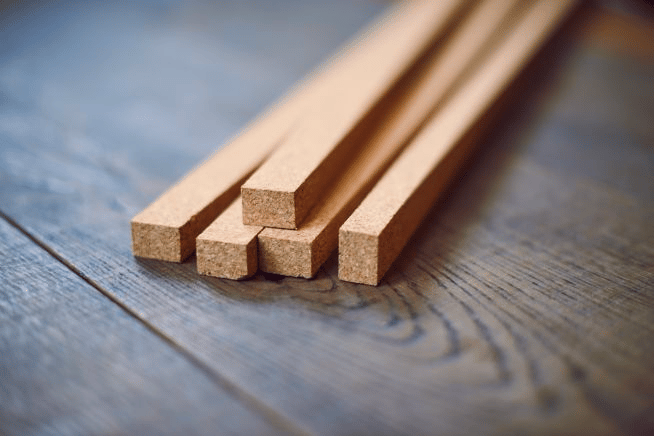As many homeowners know, wood is a material that shrinks and swells based on the weather. When it’s hot and humid, it absorbs excess moisture from the air and expands, and when it’s cold and dry, it expels moisture and contracts. That’s why houses creak and groan from time to time. They’re not ghosts—just the natural properties of wood being affected by the weather.
Unfortunately, this also happens for all types of timber-based flooring, which needs to be taken into account by flooring installers to prevent the material from buckling, lifting, cracking, or becoming damaged in other ways. They avoid the issue by including an expansion allowance in the flooring, in the form of timber floor expansion joints.
But what are they, exactly? Let’s find out.
Note: at Brisbane’s Finest Floors, we only use cork expansion joints, which we sand and coat to blend in with the timber flooring. But this article is about all types of timber floor expansion joints.
What are timber floor expansion joints?

A cork expansion joint. Image from Peak Oak
Timber floor expansion joints are a joint that allows for the expansion and contraction of wooden floorboards, to prevent them from becoming damaged. The joints are usually filled with a material that can handle expansion and contraction, such as cork, neoprene, urethane, or polysulfide, and either sanded down and coated or covered with a material such as aluminium or wooden skirting (depending on where they are placed).
The joints are usually between 5 to 8mm wide and are typically placed along the edges of the flooring. They can also be placed in the middle of existing floorboards to allow for possible expansion.
Do I need to install expansion joints?
Every single type of timber flooring in Australia requires some kind of expansion allowance to prevent floor damage. However, the width, location, and frequency of these allowances varies based on the timber material, the product, the design of the room, and the width and length of the floor. So the best way to ensure well-installed, expansion-protected timber flooring is by following the manufacturer’s recommendations.
Despite this, it can be useful to have a basic understanding of the expansion differences between common floor types. Here’s our quick breakdown:
- Solid hardwood—this has the biggest potential for swelling and shrinking due to its atomic structure, so requires a large amount of expansion allowance. Swelling is more common across the width of the board.
- Engineered flooring—this is more stable than hardwood, but can have lengthwise movement that needs to be catered for. The material used for the base is important too, and will change the expansion allowance. Plywood cores, rubber cores, and fibre board cores are all different. Finally, expansion joints may be needed where hallways link to larger rooms.
- Laminate—usually has a fibreboard core which can expand in every direction. Similarly to engineered flooring, installers may need to add expansion joints in hallways that link to large rooms.
- Floating floors—because floating floors aren’t fixed to the subfloor, they have a high risk of expansion and need plenty of expansion joints to cope.
- Strand woven bamboo—this material tends to expand mostly in width, and a little bit in length, which needs to be deterred with a recommended expansion allowance.
Brisbanes Finest Floors, with over 20 years of experience in adding wow to any wooden floor, internal or decking.
Request a free quote
Talk to us today and discuss your floor restoration, repairing your deck and new flooring.
Recent Posts
- What is the Best Decking Oil in Australia? The Ultimate List February 20, 2025
- Blackbutt timber floor with a 2 pack water-based satin finish December 6, 2024
- Mixed hardwood with a coat of whitener and 2 coats of water-based satin finish October 21, 2024







